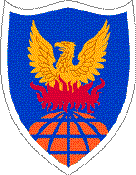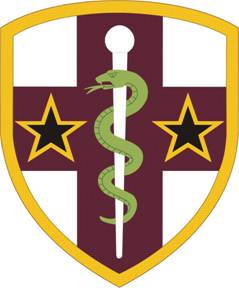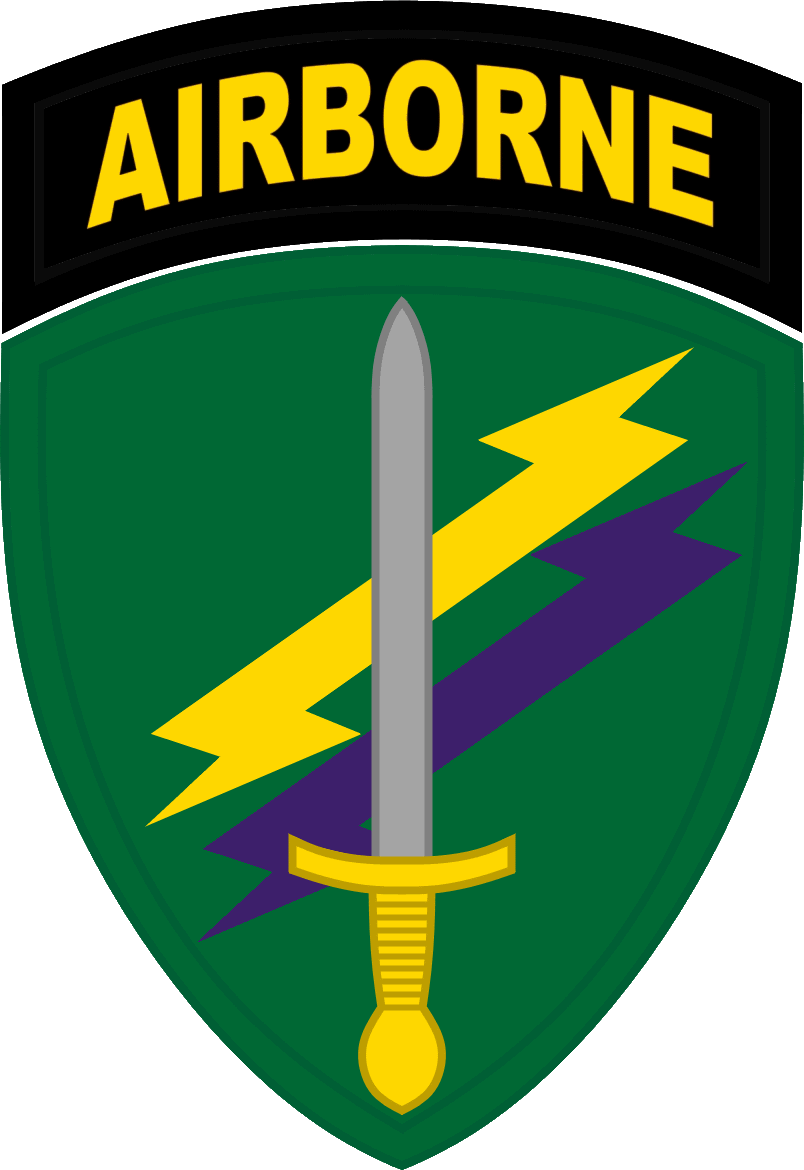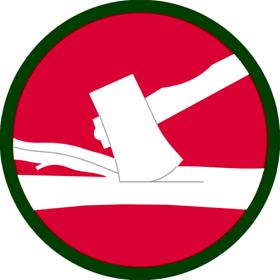United States Army Reserve on:
[Wikipedia]
[Google]
[Amazon]
The United States Army Reserve (USAR) is a
 Army Reserve Headquarters - Fort Bragg (formerly United States Army Reserve Command (USARC)) located at Fort Bragg,
Army Reserve Headquarters - Fort Bragg (formerly United States Army Reserve Command (USARC)) located at Fort Bragg,  Army Reserve Staff - National Capital Region (NCR) (formerly Office of the Chief of Army Reserve (OCAR)) located at both
Army Reserve Staff - National Capital Region (NCR) (formerly Office of the Chief of Army Reserve (OCAR)) located at both
 3rd Medical Command (Deployment Support), in Forest Park, GA
*
3rd Medical Command (Deployment Support), in Forest Park, GA
* 
 76th Operational Response Command, in
76th Operational Response Command, in 
 85th Support Command, in Arlington Heights, IL
*
85th Support Command, in Arlington Heights, IL
* 
 311th Signal Command (Theater), at
311th Signal Command (Theater), at  335th Signal Command (Theater), in East Point, GA
*
335th Signal Command (Theater), in East Point, GA
*  377th Sustainment Command (Theater), in Belle Chasse, LA
*
377th Sustainment Command (Theater), in Belle Chasse, LA
*  412th Theater Engineer Command, in
412th Theater Engineer Command, in  416th Theater Engineer Command, in Darien, IL
*
416th Theater Engineer Command, in Darien, IL
*  807th Medical Command (Deployment Support), at
807th Medical Command (Deployment Support), at  U.S. Army Reserve Support Command, First Army, at Rock Island, IL
*
U.S. Army Reserve Support Command, First Army, at Rock Island, IL
*  Army Reserve Aviation Command at Fort Knox, KY
*
Army Reserve Aviation Command at Fort Knox, KY
* 
 Army Reserve Medical Command at
Army Reserve Medical Command at  U.S. Army Reserve Legal Command, in Gaithersburg, MD
*
U.S. Army Reserve Legal Command, in Gaithersburg, MD
*  Military Intelligence Readiness Command, at
Military Intelligence Readiness Command, at  Army Civil Affairs and Psychological Operations Command (Airborne), at Fort Bragg, NC
Army Civil Affairs and Psychological Operations Command (Airborne), at Fort Bragg, NC
 7th Mission Support Command, in Kaiserslautern,
7th Mission Support Command, in Kaiserslautern,  9th Mission Support Command, at
9th Mission Support Command, at  63rd Readiness Division, in Mountain View, CA - providing support in
63rd Readiness Division, in Mountain View, CA - providing support in  81st Readiness Division, at Fort Jackson, SC - providing support in
81st Readiness Division, at Fort Jackson, SC - providing support in  88th Readiness Division, at Fort McCoy, WI - providing support in Washington,
88th Readiness Division, at Fort McCoy, WI - providing support in Washington,  99th Readiness Division, at Joint Base McGuire–Dix–Lakehurst, NJ - providing support in
99th Readiness Division, at Joint Base McGuire–Dix–Lakehurst, NJ - providing support in
 80th Training Command (The Army School System), in Richmond, VA
**
80th Training Command (The Army School System), in Richmond, VA
**  94th Training Division (Force Sustainment), at Fort Lee, VA
**
94th Training Division (Force Sustainment), at Fort Lee, VA
**  100th Training Division (Operational Support), at Fort Knox, KY
**
100th Training Division (Operational Support), at Fort Knox, KY
**  102nd Training Division (Maneuver Support), at
102nd Training Division (Maneuver Support), at  84th Training Command (Combat Support Training), at Fort Knox, KY
**
84th Training Command (Combat Support Training), at Fort Knox, KY
**  78th Training Division (Operations), at Joint Base McGuire–Dix–Lakehurst, NJ
**
78th Training Division (Operations), at Joint Base McGuire–Dix–Lakehurst, NJ
**  86th Training Division (Decisive Action), at Fort McCoy, WI
**
86th Training Division (Decisive Action), at Fort McCoy, WI
**  87th Training Division, at
87th Training Division, at  91st Training Division (Operations), in Jolon, CA
*
91st Training Division (Operations), in Jolon, CA
*  108th Training Command (
108th Training Command ( 95th Training Division (Initial Entry Training), at Fort Sill, OK
**
95th Training Division (Initial Entry Training), at Fort Sill, OK
**  98th Training Division (Initial Entry Training), at Fort Benning, GA
**
98th Training Division (Initial Entry Training), at Fort Benning, GA
**  104th Training Division (Leader Training), at
104th Training Division (Leader Training), at
 The
The
Army Reserve News
U.S. Army Reserve
*
Full listings of Reserve units
Army Reserve
US Army Reserve Shooting Team
{{Authority control United States Army Direct Reporting Units 1908 establishments in the United States
reserve force
A military reserve force is a military organization whose members have military and civilian occupations. They are not normally kept under arms, and their main role is to be available when their military requires additional manpower. Reserve ...
of the United States Army
The United States Army (USA) is the land warfare, land military branch, service branch of the United States Armed Forces. It is one of the eight Uniformed services of the United States, U.S. uniformed services, and is designated as the Army o ...
. Together, the Army Reserve and the Army National Guard constitute the Army element of the reserve components of the United States Armed Forces
The reserve components of the United States Armed Forces are military organizations whose members generally perform a minimum of 39 days of military duty per year and who augment the active duty (or full-time) military when necessary. The reserv ...
.
Since July 2020, the Chief of the United States Army Reserve is Lieutenant General
Lieutenant general (Lt Gen, LTG and similar) is a three-star military rank (NATO code OF-8) used in many countries. The rank traces its origins to the Middle Ages, where the title of lieutenant general was held by the second-in-command on the ...
Jody J. Daniels. The senior enlisted leader of the Army Reserve is Command Sergeant Major Andrew J. Lombardo. History
Origins
On 23 April 1908 Congress created the Medical Reserve Corps, the official predecessor of the Army Reserve. AfterWorld War I
World War I (28 July 1914 11 November 1918), often abbreviated as WWI, was one of the deadliest global conflicts in history. Belligerents included much of Europe, the Russian Empire, the United States, and the Ottoman Empire, with fightin ...
, under the National Defense Act of 1920, Congress reorganized the U.S. land forces by authorizing a Regular Army
A regular army is the official army of a state or country (the official armed forces), contrasting with irregular forces, such as volunteer irregular militias, private armies, mercenaries, etc. A regular army usually has the following:
* a standin ...
, a National Guard and an Organized Reserve (Officers Reserve Corps and Enlisted Reserve Corps) of unrestricted size, which later became the Army Reserve. This organization provided a peacetime pool of trained Reserve officers and enlisted men for use in war. The Organized Reserve included the Officers Reserve Corps, Enlisted Reserve Corps and Reserve Officers' Training Corps (ROTC).
Interwar period and World War II
The Organized Reserve infantry divisions raised immediately after World War I generally continued the lineage and geographic area distribution of National Army divisions that had served in the war. They were maintained on paper with all of their officers and one-third of their enlisted men. Units in other arms of the Army besidesinfantry
Infantry is a military specialization which engages in ground combat on foot. Infantry generally consists of light infantry, mountain infantry, motorized infantry & mechanized infantry, airborne infantry, air assault infantry, and mar ...
, most notably cavalry, field artillery and engineers were also formed. Organized Reserve units sometimes maintained relationships with one or several colleges or universities in close proximity, which populated them with officers through the ROTC.
Service in the Organized Reserve during the interwar period was not as appealing as the Army expected, and suffered because of limited funding that restricted training opportunities. Most divisions reached their full complement of officers, but had less than 100 enlisted men, since there was no incentive for them to serve. The extent of prewar mobilization--"a state neither of war nor of peace"--disrupted the Organized Reserve, and officers were called to active duty individually beginning in 1940 and assigned to Regular Army and National Guard units. When the Organized Reserve was nominally mobilized via presidential order beginning in 1942, "few of the Reserve officers originally assigned to...units were available for duty with them. Consequently, the units as activated bore small resemblance to those of peacetime." The order and timetable in which the Organized Reserve divisions were ordered to active duty was based upon a number of factors, such as the number of World War I battle honors earned, if applicable, the location and availability of training sites, and the ability of the Army to furnish divisional cadres and filler replacements.
The 101st Infantry Division was designated a division of the Organized Reserve after World War I and assigned to the state of Wisconsin; unlike the 82nd Airborne Division, the Reserve division was disbanded when the 101st Airborne Division was raised in the Army of the United States on 15 August 1942.
Cold War
A tentative troop basis for the Organized Reserve Corps (ORC), prepared in March 1946, outlined 25 divisions: three armored, five airborne, and 17 infantry. These divisions and all other Organized Reserve Corps units were to be maintained in one of three strength categories, labeled Class A, Class B, and Class C. Class A units were divided into two groups, one for combat and one for service, and units were to be at required table of organization strength; Class B units were to have their full complement of officers and enlisted cadre strength; and Class C were to have officers only. The troop basis listed nine divisions as Class A, nine as Class B, and seven as Class C. Major General Ray E. Porter therefore proposed reclassification of all Class A divisions as Class B units. Eventually the War Department agreed and made the appropriate changes. Although the dispute over Class A units lasted several months, the War Department proceeded with the reorganization of the Organized Reserve Corps divisions during the summer of 1946. That all divisions were to begin as Class C (officers only) units, progressing to the other categories as men and equipment became available, undoubtedly influenced the decision. Also, the War Department wanted to take advantage of the pool of trained reserve officers and enlisted men from World War II. By that time Army Ground Forces had been reorganized as an army group headquarters that commanded six geographic armies. The armies replaced the nine corps areas of the prewar era, and the army commanders were tasked to organize and train both Regular Army and Organized Reserve Corps units. The plan the army commanders received called for twenty-five Organized Reserve Corps divisions, but the divisions activated between September 1946 and November 1947 differed somewhat from the original plans. The First United States Army declined to support an airborne division, and the 98th Infantry Division replaced the 98th Airborne Division. After the change, the Organized Reserve Corps had four airborne, three armored, and eighteen infantry divisions. The Second Army insisted upon the number 80 for its airborne unit because the division was to be raised in the prewar 80th Division's area, not that of the 99th. Finally, the 103rd Infantry Division, organized in 1921 in New Mexico, Colorado, and Arizona, was moved to Iowa, Minnesota, South Dakota, and North Dakota in the Fifth United States Army area. The Seventh Army (later replaced by Third Army), allotted the 15th Airborne Division, refused the designation, and the adjutant general replaced it by constituting the 108th Airborne Division, which fell within that component's list of infantry and airborne divisional numbers. Thus the final tally of divisions formed after World War II appears to have been the 19th, 21st, and 22d Armored Divisions; the 80th, 84th, 100th and 108th Airborne Divisions; and the 76th, 77th, 79th, 81st, 83rd, 85th, 87th, 89th, 90th, 91st, 94th, 95th, 96th, 97th, 98th, 102nd, 103rd, and 104th Infantry Divisions. A major problem in forming divisions and other units in the Organized Reserve Corps was adequate housing. While many National Guard units owned their own armories, some dating back to the nineteenth century, the Organized Reserve Corps had no facilities for storing equipment and for training. Although the War Department requested funds for needed facilities, Congress moved slowly in response. The Organized Reserves were redesignated 25 March 1948 as the Organized Reserve Corps. Recognizing the importance of the Organized Reserve to the World War II effort, Congress authorized retirement and drill pay for the first time in 1948. During the summer and fall of 1951 the six army commanders in the United States, staff agencies, and the Section V Committee (created after World War I for the reserve components to have a voice in their affairs), evaluated Department of the Army reorganization plans for the ORC. The army commanders urged that all divisions in the Organized Reserve Corps be infantry divisions because they believed that the reserves could not adequately support armored and airborne training. They thought thirteen, rather than twelve, reserve divisions should be maintained to provide a better geographic distribution of the units. The Section V Committee opposed the reduction of the Organized Reserve Corps from twenty-five to thirteen divisions because it feared unfavorable publicity, particularly with the nation at war. On 20 December theVice Chief of Staff of the United States Army
The vice chief of staff of the Army (VCSA) is the principal deputy to the chief of staff of the Army, and is the second-highest-ranking officer on active duty in the Department of the Army.
The vice chief of staff generally handles the day-to-d ...
, General John E. Hull, directed the reorganization and redesignation of airborne and armored divisions as infantry as soon as practicable. In March 1952 the 80th, 84th, 100th, and 108th Airborne Divisions were reorganized and redesignated as infantry divisions, and the 63d, 70th, and 75th Infantry Divisions replaced the 13th, 21st, and 22d Armored Divisions.
Before the dust had settled on the reforms, the Army realized that it had failed to improve unit manning or meet reasonable mobilization requirements. In the fall of 1952 Army leaders thus proposed that the personnel from the thirteen inactivated Army Reserve divisions be assigned to strengthen the remaining twelve divisions. To keep the unneeded fifteen Army Reserve divisions active, they were to be reorganized as training divisions to staff training centers upon mobilization or man maneuver area commands for training troops. The continental army commanders implemented the new Army Reserve troop basis in 1955 piecemeal. They reorganized, without approved tables of organization, the 70th, 76th, 78th, 80th, 84th, 85th, 89th, 91st, 95th, 98th, 100th, and 108th Infantry Divisions as cadre for replacement training centers and organized the 75th "Maneuver Area Command" using the resources of the 75th Infantry Division. Two years later the 75th Infantry Division was inactivated along with 87th Infantry Division. Assets of the 87th were used to organize a maneuver area command; thus one unneeded division remained in the troop basis.
While the Korean War
, date = {{Ubl, 25 June 1950 – 27 July 1953 (''de facto'')({{Age in years, months, weeks and days, month1=6, day1=25, year1=1950, month2=7, day2=27, year2=1953), 25 June 1950 – present (''de jure'')({{Age in years, months, weeks a ...
was still underway, Congress began making significant changes in the structure and role of the Army Reserve. These changes transformed the Organized Reserve into the United States Army Reserve, from 9 July 1952. This new organization was divided into a Ready Reserve, Standby Reserve, and Retired Reserve. Army Reserve units were authorized twenty-four inactive duty training days a year and up to seventeen days of active duty (called annual training).
In 1959 the Army decided to realign National Guard and Army Reserve divisions under Pentomic
Pentomic (cf. ''Greek pent(e)-'' +''-tome'' "of five parts") was a structure for infantry and airborne divisions adopted by the US Army between 1957 and 1963, in response to the potential use of tactical nuclear weapons, on future battlefields. ...
structures. Secretary of Defense Neil H. McElroy decided on 10 Army Reserve divisions. By October 1959 ten Army Reserve infantry divisions completed their transition, but at a reduced strength. The eleventh combat division in the Army Reserve, the 104th, was converted to training, for a total of thirteen training divisions, all of which were in the Army Reserve.
To reorganize the Army Reserve to the new ROAD structures in the early 1960s, the Army Staff decided to retain one Army Reserve division in each of the six Army areas and to eliminate four divisions. Army commanders selected the 63d, 77th, 81st, 83d, 90th, and 102d Infantry Divisions for retention and reorganized them under ROAD by the end of April 1963. Each division had two tank and six infantry battalions.
With the elimination of the 79th, 94th, 96th, and 103d Infantry Divisions, the Army decided to retain their headquarters as a way to preserve spaces for general and field grade officers. It reorganized the units as operational headquarters (subsequently called command headquarters ivision and directed them to supervise the training of combat and support units located in the former divisional areas and to provide for their administrative support. Some former divisional units assigned to the four divisions were used to organize four brigades, which added flexibility to the force as well as provided four general officer reserve billets. In January and February 1963 the 157th, 187th, 191st, and 205th Infantry Brigades were organized with headquarters in Pennsylvania, Massachusetts, Montana, and Minnesota, respectively. The designation of each brigade was derived from the lowest numbered infantry brigade associated with the division under the square structure. As with the Regular Army brigades, the number and type of maneuver elements in each Army Reserve brigade varied.
In November 1965, a long-standing controversial goal of the Defense Department, a reduction of the reserve troop basis, was achieved. Those reserve units that were judged unnecessary and others that were undermanned and underequipped were deleted and their assets used to field contingency forces. Among the units inactivated were the last six combat divisions in the Army Reserve, the 63d, 77th, 81st, 83d, 90th, and 102d Infantry Divisions, and the 79th, 94th, and 96th Command Headquarters (Division). The 103d Command Headquarters (Division) was converted to a support brigade headquarters.
A number of U.S. Army Reserve corps headquarters were disestablished on 31 March 1968. They were reorganized as Army Reserve Commands.
In 1980, the peacetime USAR chain of command
A command hierarchy is a group of people who carry out orders based on others' authority within the group. It can be viewed as part of a power structure, in which it is usually seen as the most vulnerable and also the most powerful part.
Milit ...
was overlaid with a wartime trace. In an expansion of the roundout and affiliation programs begun ten years earlier, CAPSTONE purported to align every Army Reserve unit with the active and reserve component units with which they were anticipated to deploy. Units maintained lines of communication with the units – often hundreds or thousands of miles away in peacetime – who would presumably serve above or below them in the event of mobilization. This communication, in some cases, extended to coordinated annual training opportunities.
Despite the commonly held belief that CAPSTONE traces were set in stone, the process of selecting units to mobilize and deploy in 1990 and 1991 in support of Operation Desert Shield
The Gulf War was a 1990–1991 armed campaign waged by a Coalition of the Gulf War, 35-country military coalition in response to the Iraqi invasion of Kuwait. Spearheaded by the United States, the coalition's efforts against Ba'athist Iraq, ...
and Desert Storm frequently ignored CAPSTONE.
Post Cold War
In the post- Cold War draw-down, all of the Army Reserve's combat units were disbanded, except the 100th Battalion, 442nd Infantry Regiment. This meant the disestablishment of the three remaining Army Reserve fighting brigades: the 157th Infantry Brigade (Mechanized) (Separate) ofPennsylvania
Pennsylvania (; ( Pennsylvania Dutch: )), officially the Commonwealth of Pennsylvania, is a state spanning the Mid-Atlantic, Northeastern, Appalachian, and Great Lakes regions of the United States. It borders Delaware to its southeast, ...
, the 187th Infantry Brigade (Separate) of Massachusetts
Massachusetts (Massachusett: ''Muhsachuweesut Massachusett_writing_systems.html" ;"title="nowiki/> məhswatʃəwiːsət.html" ;"title="Massachusett writing systems">məhswatʃəwiːsət">Massachusett writing systems">məhswatʃəwiːsət'' En ...
, and the 205th Infantry Brigade (Separate) (Light) of Minnesota
Minnesota () is a state in the upper midwestern region of the United States. It is the 12th largest U.S. state in area and the 22nd most populous, with over 5.75 million residents. Minnesota is home to western prairies, now given over to ...
. Many of the Army Reserve training divisions were realigned as institutional training divisions.
With the Army National Guard providing reserve component combat formations and related combat support units, the Army Reserve is configured to provide combat support, combat service support, peacekeeping, nation-building and civil support capability. With roughly twenty percent of the Army's organized units and 5.3 percent of the Army's budget, the Army Reserve provides about half of the Army's combat support and a quarter of the Army's mobilization base expansion capability.
Global War on Terrorism
Reserve service today
Reserve Component (RC) Soldiers mainly perform part-time duties as opposed to the full-time (active duty) Soldiers, but rotate through mobilizations to full-time duty. When not on active duty, RC Soldiers typically perform training and service one weekend per month, currently referred to asBattle Assembly
Battle Assembly is the term used by the United States Army Reserve to describe monthly training, where soldiers practice and perfect their military skills and maintain individual and unit readiness in the event of mobilization and deployment. The ...
, and for two continuous weeks at a time during the year referred to as Annual Training (AT). Many RC Soldiers are organized into Army Reserve troop program units (TPU), while others serve in active Army units as Individual Mobilization Augmentees (IMA), or are in non-drilling control groups of the Individual Ready Reserve
The Individual Ready Reserve (IRR) is a category of the Ready Reserve of the Reserve Component of the Armed Forces of the United States composed of former active duty or reserve military personnel. Its governing statute is codified at . For so ...
(IRR). Soldiers may also serve on active duty in an Active Guard/Reserve (AGR) status in support of the United States Army Reserve (USAR) mission or through Active Duty Operational Support (ADOS) and Contingency Operations-Active Duty Operational Support (CO-ADOS) missions.
All United States Army Soldiers sign an initial eight-year service contract upon entry into the military. Occasionally, the contract specifies that some of the service will be in the Regular Army
A regular army is the official army of a state or country (the official armed forces), contrasting with irregular forces, such as volunteer irregular militias, private armies, mercenaries, etc. A regular army usually has the following:
* a standin ...
(also called Active Component/AC) for two, three, or four-year periods; with the remaining obligation served in the RC. Though typically, Soldiers sign contracts specifying that all eight years be served in the RC, with the first 6 years in drilling status and the last 2 years in a non-drilling IRR status.
Soldiers entering directly into the U.S. Army Reserve nevertheless encompasses a period of initial entry training (IET). The amount of time begins with approximately 9 weeks of Basic Combat Training (BCT), but total IET time varies according to the enlistee's elected Military Occupational Specialty (MOS) which dictates Advanced Individual Training (AIT). All U.S. Army Reserve Soldiers are subject to mobilization throughout the term of their enlistment. Soldiers who, after completing the AC portion of their enlistment contract choose not to re-enlist on active duty, are automatically transferred to the RC to complete the remainder of their Statutory Obligation (eight-year service total) and may be served in a drilling Troop Program Unit (TPU), Individual mobilization Augmentee (IMA), or Individual Ready Reserve (IRR) status.
Non-commissioned officers of the rank of Staff Sergeant (E-6) and above will reenlist for an indefinite status after they have served for 12 years of service or more.
The United States Army Reserve was composed of 188,703 soldiers as of late 2020.
Importance to the Active Army
A significant portion of many unit types and specializations exist in the Army Reserve. Some unique enabling units only exist in the Army Reserve.Current active reserve formations and units
Headquarters commands
North Carolina
North Carolina () is a state in the Southeastern region of the United States. The state is the 28th largest and 9th-most populous of the United States. It is bordered by Virginia to the north, the Atlantic Ocean to the east, Georgia and ...
:Through USARC, the CAR commands all Army Reserve units. USARC is responsible for the staffing, training, management, and deployment of units to ensure readiness for Army missions. The Army Reserve consists of three main categories of units: operational and functional, support, and training. Due to Base Realignment and Closure Act, the headquarters of USAR moved to Fort Bragg.
Fort Belvoir
Fort Belvoir is a United States Army installation and a census-designated place (CDP) in Fairfax County, Virginia, United States. It was developed on the site of the former Belvoir plantation, seat of the prominent Fairfax family for whom Fai ...
, Virginia
Virginia, officially the Commonwealth of Virginia, is a state in the Mid-Atlantic and Southeastern regions of the United States, between the Atlantic Coast and the Appalachian Mountains. The geography and climate of the Commonwealth ar ...
and The Pentagon
The Pentagon is the headquarters building of the United States Department of Defense. It was constructed on an accelerated schedule during World War II. As a symbol of the U.S. military, the phrase ''The Pentagon'' is often used as a meton ...
:OCAR provides the Chief of Army Reserve (CAR) with a staff of functional advisors who develop and execute Army Reserve plans, policies and programs, plus administer Army Reserve personnel, operations, and funding. The CAR is responsible for plans, policies and programs affecting all Army Reserve Soldiers, including those who report directly to the Army. OCAR is composed of specialized groups that advise and support the CAR on a wide variety of issues.
Functional commands
* 3rd Medical Command (Deployment Support), in Forest Park, GA
*
3rd Medical Command (Deployment Support), in Forest Park, GA
* 
75th Innovation Command
The 75th Innovation Command (75th IC) is a separate command of the United States Army Reserve.75th Innovation C ...
, in Houston
Houston (; ) is the most populous city in Texas, the most populous city in the Southern United States, the fourth-most populous city in the United States, and the sixth-most populous city in North America, with a population of 2,304,580 i ...
, TX
* Fort Douglas
Camp Douglas was established in October 1862, during the American Civil War, as a small military garrison about three miles east of Salt Lake City, Utah, to protect the overland mail route and telegraph lines along the Central Overland Route. I ...
, UT
* 79th Sustainment Support Command
The 79th Infantry Division (formerly known as the 79th Division) was an infantry formation of the United States Army Reserve in World Wars I and II.
Since 2009, it has been active as the 79th Theater Sustainment Command.
World War I
*Activate ...
, in Los Alamitos, CA
* 
200th Military Police Command
The 200th Military Police Command is the senior Law enforcement agency, law enforcement unit within the United States Army Reserve, U.S. Army Reserve. The subordinate elements of the 200th MP Command are primarily military police units, but the com ...
, at Fort Meade
Fort George G. Meade is a United States Army installation located in Maryland, that includes the Defense Information School, the Defense Media Activity, the United States Army Field Band, and the headquarters of United States Cyber Command, the ...
, MD
*  311th Signal Command (Theater), at
311th Signal Command (Theater), at Fort Shafter
Fort Shafter, in Honolulu CDP, Page 4/ref> City and County of Honolulu, Hawai‘i, is the headquarters of the United States Army Pacific, which commands most Army forces in the Asia-Pacific region with the exception of Korea. Geographically, F ...
, HI
*  335th Signal Command (Theater), in East Point, GA
*
335th Signal Command (Theater), in East Point, GA
*  377th Sustainment Command (Theater), in Belle Chasse, LA
*
377th Sustainment Command (Theater), in Belle Chasse, LA
*  412th Theater Engineer Command, in
412th Theater Engineer Command, in Vicksburg, Mississippi
Vicksburg is a historic city in Warren County, Mississippi, United States. It is the county seat, and the population at the 2010 census was 23,856.
Located on a high bluff on the east bank of the Mississippi River across from Louisiana, Vi ...
*  416th Theater Engineer Command, in Darien, IL
*
416th Theater Engineer Command, in Darien, IL
*  807th Medical Command (Deployment Support), at
807th Medical Command (Deployment Support), at Fort Douglas
Camp Douglas was established in October 1862, during the American Civil War, as a small military garrison about three miles east of Salt Lake City, Utah, to protect the overland mail route and telegraph lines along the Central Overland Route. I ...
, UT
*  Army Reserve Aviation Command at Fort Knox, KY
*
Army Reserve Aviation Command at Fort Knox, KY
* Army Reserve Careers Group
An army (from Old French ''armee'', itself derived from the Latin verb ''armāre'', meaning "to arm", and related to the Latin noun ''arma'', meaning "arms" or "weapons"), ground force or land force is a fighting force that fights primarily on ...
at Fort Knox, KY
*  Army Reserve Medical Command at
Army Reserve Medical Command at Pinellas Park, Florida
Pinellas Park is a city located in central Pinellas County, Florida, United States. The population was 53,093 at the 2020 census. Originally home to northern transplants and vacationers, the hundred year old city has grown into the fourth largest ...
*  U.S. Army Reserve Legal Command, in Gaithersburg, MD
*
U.S. Army Reserve Legal Command, in Gaithersburg, MD
*  Military Intelligence Readiness Command, at
Military Intelligence Readiness Command, at Fort Belvoir
Fort Belvoir is a United States Army installation and a census-designated place (CDP) in Fairfax County, Virginia, United States. It was developed on the site of the former Belvoir plantation, seat of the prominent Fairfax family for whom Fai ...
, VA
*  Army Civil Affairs and Psychological Operations Command (Airborne), at Fort Bragg, NC
Army Civil Affairs and Psychological Operations Command (Airborne), at Fort Bragg, NC
Geographic commands
* 1st Mission Support Command, at Fort Buchanan, Puerto Rico - providing support inPuerto Rico
Puerto Rico (; abbreviated PR; tnq, Boriken, ''Borinquen''), officially the Commonwealth of Puerto Rico ( es, link=yes, Estado Libre Asociado de Puerto Rico, lit=Free Associated State of Puerto Rico), is a Caribbean island and unincorporated ...
and United States Virgin Islands
The United States Virgin Islands,. Also called the ''American Virgin Islands'' and the ''U.S. Virgin Islands''. officially the Virgin Islands of the United States, are a group of Caribbean islands and an unincorporated and organized territory ...
*  7th Mission Support Command, in Kaiserslautern,
7th Mission Support Command, in Kaiserslautern, Germany
Germany,, officially the Federal Republic of Germany, is a country in Central Europe. It is the second most populous country in Europe after Russia, and the most populous member state of the European Union. Germany is situated betwe ...
*  9th Mission Support Command, at
9th Mission Support Command, at Fort Shafter
Fort Shafter, in Honolulu CDP, Page 4/ref> City and County of Honolulu, Hawai‘i, is the headquarters of the United States Army Pacific, which commands most Army forces in the Asia-Pacific region with the exception of Korea. Geographically, F ...
, HI, under operational control of Army Pacific - providing support in Hawaii
Hawaii ( ; haw, Hawaii or ) is a state in the Western United States, located in the Pacific Ocean about from the U.S. mainland. It is the only U.S. state outside North America, the only state that is an archipelago, and the only state ...
, Alaska
Alaska ( ; russian: Аляска, Alyaska; ale, Alax̂sxax̂; ; ems, Alas'kaaq; Yup'ik: ''Alaskaq''; tli, Anáaski) is a state located in the Western United States on the northwest extremity of North America. A semi-exclave of the U.S. ...
, American Samoa, Japan, South Korea
South Korea, officially the Republic of Korea (ROK), is a country in East Asia, constituting the southern part of the Korean Peninsula and sharing a land border with North Korea. Its western border is formed by the Yellow Sea, while its eas ...
, Guam and Saipan.
* California
California is a state in the Western United States, located along the Pacific Coast. With nearly 39.2million residents across a total area of approximately , it is the most populous U.S. state and the 3rd largest by area. It is also the m ...
, Nevada
Nevada ( ; ) is a state in the Western region of the United States. It is bordered by Oregon to the northwest, Idaho to the northeast, California to the west, Arizona to the southeast, and Utah to the east. Nevada is the 7th-most extensive, ...
, New Mexico
)
, population_demonym = New Mexican ( es, Neomexicano, Neomejicano, Nuevo Mexicano)
, seat = Santa Fe
, LargestCity = Albuquerque
, LargestMetro = Tiguex
, OfficialLang = None
, Languages = English, Spanish ( New Mexican), Navajo, Ke ...
, Arizona
Arizona ( ; nv, Hoozdo Hahoodzo ; ood, Alĭ ṣonak ) is a state in the Southwestern United States. It is the 6th largest and the 14th most populous of the 50 states. Its capital and largest city is Phoenix. Arizona is part of the Fou ...
, Texas
Texas (, ; Spanish: ''Texas'', ''Tejas'') is a state in the South Central region of the United States. At 268,596 square miles (695,662 km2), and with more than 29.1 million residents in 2020, it is the second-largest U.S. state by ...
, Oklahoma and Arkansas
Arkansas ( ) is a landlocked state in the South Central United States. It is bordered by Missouri to the north, Tennessee and Mississippi to the east, Louisiana to the south, and Texas and Oklahoma to the west. Its name is from the O ...
*  81st Readiness Division, at Fort Jackson, SC - providing support in
81st Readiness Division, at Fort Jackson, SC - providing support in Florida
Florida is a state located in the Southeastern region of the United States. Florida is bordered to the west by the Gulf of Mexico, to the northwest by Alabama, to the north by Georgia, to the east by the Bahamas and Atlantic Ocean, and to ...
, Louisiana
Louisiana , group=pronunciation (French: ''La Louisiane'') is a state in the Deep South and South Central regions of the United States. It is the 20th-smallest by area and the 25th most populous of the 50 U.S. states. Louisiana is borde ...
, Mississippi
Mississippi () is a state in the Southeastern region of the United States, bordered to the north by Tennessee; to the east by Alabama; to the south by the Gulf of Mexico; to the southwest by Louisiana; and to the northwest by Arkansas. Miss ...
, Alabama
(We dare defend our rights)
, anthem = "Alabama"
, image_map = Alabama in United States.svg
, seat = Montgomery
, LargestCity = Huntsville
, LargestCounty = Baldwin County
, LargestMetro = Greater Birmingham
, area_total_km2 = 135,765 ...
, Georgia
Georgia most commonly refers to:
* Georgia (country), a country in the Caucasus region of Eurasia
* Georgia (U.S. state), a state in the Southeast United States
Georgia may also refer to:
Places
Historical states and entities
* Related to the ...
, North Carolina
North Carolina () is a state in the Southeastern region of the United States. The state is the 28th largest and 9th-most populous of the United States. It is bordered by Virginia to the north, the Atlantic Ocean to the east, Georgia and ...
, South Carolina
)'' Animis opibusque parati'' ( for, , Latin, Prepared in mind and resources, links=no)
, anthem = " Carolina";" South Carolina On My Mind"
, Former = Province of South Carolina
, seat = Columbia
, LargestCity = Charleston
, LargestMetro = ...
, Kentucky
Kentucky ( , ), officially the Commonwealth of Kentucky, is a state in the Southeastern region of the United States and one of the states of the Upper South. It borders Illinois, Indiana, and Ohio to the north; West Virginia and Virginia ...
, Tennessee
Tennessee ( , ), officially the State of Tennessee, is a landlocked state in the Southeastern region of the United States. Tennessee is the 36th-largest by area and the 15th-most populous of the 50 states. It is bordered by Kentucky to th ...
and Puerto Rico
Puerto Rico (; abbreviated PR; tnq, Boriken, ''Borinquen''), officially the Commonwealth of Puerto Rico ( es, link=yes, Estado Libre Asociado de Puerto Rico, lit=Free Associated State of Puerto Rico), is a Caribbean island and unincorporated ...
* Oregon
Oregon () is a state in the Pacific Northwest region of the Western United States. The Columbia River delineates much of Oregon's northern boundary with Washington, while the Snake River delineates much of its eastern boundary with Idaho. T ...
, Idaho, Montana
Montana () is a state in the Mountain West division of the Western United States. It is bordered by Idaho to the west, North Dakota and South Dakota to the east, Wyoming to the south, and the Canadian provinces of Alberta, British Columb ...
, Wyoming
Wyoming () is a state in the Mountain West subregion of the Western United States. It is bordered by Montana to the north and northwest, South Dakota and Nebraska to the east, Idaho to the west, Utah to the southwest, and Colorado to the s ...
, North Dakota
North Dakota () is a U.S. state in the Upper Midwest, named after the indigenous Dakota Sioux. North Dakota is bordered by the Canadian provinces of Saskatchewan and Manitoba to the north and by the U.S. states of Minnesota to the east, So ...
, South Dakota
South Dakota (; Sioux: , ) is a U.S. state in the North Central region of the United States. It is also part of the Great Plains. South Dakota is named after the Lakota and Dakota Sioux Native American tribes, who comprise a large porti ...
, Utah
Utah ( , ) is a state in the Mountain West subregion of the Western United States. Utah is a landlocked U.S. state bordered to its east by Colorado, to its northeast by Wyoming, to its north by Idaho, to its south by Arizona, and to it ...
, Colorado
Colorado (, other variants) is a state in the Mountain states, Mountain West subregion of the Western United States. It encompasses most of the Southern Rocky Mountains, as well as the northeastern portion of the Colorado Plateau and the wes ...
, Nebraska
Nebraska () is a state in the Midwestern region of the United States. It is bordered by South Dakota to the north; Iowa to the east and Missouri to the southeast, both across the Missouri River; Kansas to the south; Colorado to the sout ...
, Kansas
Kansas () is a state in the Midwestern United States. Its capital is Topeka, and its largest city is Wichita. Kansas is a landlocked state bordered by Nebraska to the north; Missouri to the east; Oklahoma to the south; and Colorado to th ...
, Wisconsin
Wisconsin () is a state in the upper Midwestern United States. Wisconsin is the 25th-largest state by total area and the 20th-most populous. It is bordered by Minnesota to the west, Iowa to the southwest, Illinois to the south, Lake M ...
, Michigan
Michigan () is a U.S. state, state in the Great Lakes region, Great Lakes region of the Upper Midwest, upper Midwestern United States. With a population of nearly 10.12 million and an area of nearly , Michigan is the List of U.S. states and ...
, Illinois
Illinois ( ) is a state in the Midwestern United States. Its largest metropolitan areas include the Chicago metropolitan area, and the Metro East section, of Greater St. Louis. Other smaller metropolitan areas include, Peoria and Rockf ...
, Indiana
Indiana () is a U.S. state in the Midwestern United States. It is the 38th-largest by area and the 17th-most populous of the 50 States. Its capital and largest city is Indianapolis. Indiana was admitted to the United States as the 19th s ...
, Minnesota
Minnesota () is a state in the upper midwestern region of the United States. It is the 12th largest U.S. state in area and the 22nd most populous, with over 5.75 million residents. Minnesota is home to western prairies, now given over to ...
, Iowa
Iowa () is a state in the Midwestern region of the United States, bordered by the Mississippi River to the east and the Missouri River and Big Sioux River to the west. It is bordered by six states: Wisconsin to the northeast, Illinois to th ...
, Missouri
Missouri is a state in the Midwestern region of the United States. Ranking 21st in land area, it is bordered by eight states (tied for the most with Tennessee): Iowa to the north, Illinois, Kentucky and Tennessee to the east, Arkansas t ...
and Ohio
Ohio () is a state in the Midwestern region of the United States. Of the fifty U.S. states, it is the 34th-largest by area, and with a population of nearly 11.8 million, is the seventh-most populous and tenth-most densely populated. The sta ...
*  99th Readiness Division, at Joint Base McGuire–Dix–Lakehurst, NJ - providing support in
99th Readiness Division, at Joint Base McGuire–Dix–Lakehurst, NJ - providing support in New Jersey
New Jersey is a state in the Mid-Atlantic and Northeastern regions of the United States. It is bordered on the north and east by the state of New York; on the east, southeast, and south by the Atlantic Ocean; on the west by the Delaware ...
, New York, New Hampshire
New Hampshire is a state in the New England region of the northeastern United States. It is bordered by Massachusetts to the south, Vermont to the west, Maine and the Gulf of Maine to the east, and the Canadian province of Quebec to the nor ...
, Pennsylvania
Pennsylvania (; ( Pennsylvania Dutch: )), officially the Commonwealth of Pennsylvania, is a state spanning the Mid-Atlantic, Northeastern, Appalachian, and Great Lakes regions of the United States. It borders Delaware to its southeast, ...
, Massachusetts
Massachusetts (Massachusett: ''Muhsachuweesut Massachusett_writing_systems.html" ;"title="nowiki/> məhswatʃəwiːsət.html" ;"title="Massachusett writing systems">məhswatʃəwiːsət">Massachusett writing systems">məhswatʃəwiːsət'' En ...
, Vermont
Vermont () is a state in the northeast New England region of the United States. Vermont is bordered by the states of Massachusetts to the south, New Hampshire to the east, and New York to the west, and the Canadian province of Quebec to ...
, Rhode Island
Rhode Island (, like ''road'') is a state in the New England region of the Northeastern United States. It is the smallest U.S. state by area and the seventh-least populous, with slightly fewer than 1.1 million residents as of 2020, but it ...
, West Virginia
West Virginia is a state in the Appalachian, Mid-Atlantic and Southeastern regions of the United States.The Census Bureau and the Association of American Geographers classify West Virginia as part of the Southern United States while the B ...
, Maryland
Maryland ( ) is a state in the Mid-Atlantic region of the United States. It shares borders with Virginia, West Virginia, and the District of Columbia to its south and west; Pennsylvania to its north; and Delaware and the Atlantic Ocean to ...
, Delaware, Maine
Maine () is a state in the New England and Northeastern regions of the United States. It borders New Hampshire to the west, the Gulf of Maine to the southeast, and the Canadian provinces of New Brunswick and Quebec to the northeast and ...
, Connecticut
Connecticut () is the southernmost state in the New England region of the Northeastern United States. It is bordered by Rhode Island to the east, Massachusetts to the north, New York to the west, and Long Island Sound to the south. Its capita ...
and Virginia
Virginia, officially the Commonwealth of Virginia, is a state in the Mid-Atlantic and Southeastern regions of the United States, between the Atlantic Coast and the Appalachian Mountains. The geography and climate of the Commonwealth ar ...
Training commands
* 100th Training Division (Operational Support), at Fort Knox, KY
**
100th Training Division (Operational Support), at Fort Knox, KY
** Fort Leonard Wood
Fort Leonard Wood is a U.S. Army training installation located in the Missouri Ozarks. The main gate is located on the southern boundary of The City of St. Robert. The post was created in December 1940 and named in honor of General Leonard W ...
, MO
*  84th Training Command (Combat Support Training), at Fort Knox, KY
**
84th Training Command (Combat Support Training), at Fort Knox, KY
**  86th Training Division (Decisive Action), at Fort McCoy, WI
**
86th Training Division (Decisive Action), at Fort McCoy, WI
**  87th Training Division, at
87th Training Division, at Birmingham
Birmingham ( ) is a City status in the United Kingdom, city and metropolitan borough in the metropolitan county of West Midlands (county), West Midlands in England. It is the second-largest city in the United Kingdom with a population of 1. ...
, AL
**  91st Training Division (Operations), in Jolon, CA
*
91st Training Division (Operations), in Jolon, CA
*  108th Training Command (
108th Training Command (Initial Entry Training
United States Army Basic Combat Training (BCT) is the recruit training program of the United States Army, for service in the U.S. Army, U.S. Army Reserve, or the Army National Guard.
Some trainees attend basic combat training along with their a ...
), in Charlotte, NC, under operational control of Training and Doctrine Command
The United States Army Training and Doctrine Command (TRADOC) is a major command of the United States Army headquartered at Fort Eustis, Virginia. It is charged with overseeing training of Army forces and the development of operational doctrine. ...
**  95th Training Division (Initial Entry Training), at Fort Sill, OK
**
95th Training Division (Initial Entry Training), at Fort Sill, OK
** Joint Base Lewis–McChord
Joint Base Lewis–McChord (JBLM) is a U.S. military installation home to I Corps and 62nd Airlift Wing located south-southwest of Tacoma, Washington under the jurisdiction of the United States Army Joint Base Headquarters, Joint Base Lewis–Mc ...
, WA
Individual Ready Reserve
 The
The Individual Ready Reserve
The Individual Ready Reserve (IRR) is a category of the Ready Reserve of the Reserve Component of the Armed Forces of the United States composed of former active duty or reserve military personnel. Its governing statute is codified at . For so ...
(IRR) consists of individuals who are active reservists but not assigned to a particular Active Reserve Unit. Members of the IRR are encouraged to take advantage of training opportunities and are eligible for promotion provided all requirements are met.
Retired Reserve
The Retired Reserve consists of soldiers who have retired from either the active or reserve components of the Army but have not reached the age of 60.Other components
The Army of the United States (AUS) is the official name for the conscripted force of the Army that may be raised at the discretion of theUnited States Congress
The United States Congress is the legislature of the federal government of the United States. It is bicameral, composed of a lower body, the House of Representatives, and an upper body, the Senate. It meets in the U.S. Capitol in Washing ...
, often at time of war or mobilization for war. The Army of the United States was first established in 1940 and its last use of the AUS was in 1974. The predecessors of the AUS were the National Army during World War I
World War I (28 July 1914 11 November 1918), often abbreviated as WWI, was one of the deadliest global conflicts in history. Belligerents included much of Europe, the Russian Empire, the United States, and the Ottoman Empire, with fightin ...
and the Volunteer Army during the American Civil War
The American Civil War (April 12, 1861 – May 26, 1865; also known by other names) was a civil war in the United States. It was fought between the Union ("the North") and the Confederacy ("the South"), the latter formed by states ...
and Spanish–American War
, partof = the Philippine Revolution, the decolonization of the Americas, and the Cuban War of Independence
, image = Collage infobox for Spanish-American War.jpg
, image_size = 300px
, caption = (cloc ...
.
See also
*Uniformed Services Employment and Reemployment Rights Act
The Uniformed Services Employment and Reemployment Rights Act of 1994 (USERRA, , codified as amended at ) was passed by U.S. Congress and signed into law by U.S. President Bill Clinton on October 13, 1994 to protect the civilian employment of a ...
Comparable organizations
* Army National Guard (U.S. Army)
* United States Marine Corps Reserve
* United States Navy Reserve
* United States Coast Guard Reserve
* Air National Guard (U.S. Air Force)
* Air Force Reserve Command (U.S. Air Force)
References
Sources
* * Wilson, John B. ''Maneuver and Firepower: The Evolution of Divisions and Separate Brigades''. Washington, D.C.: Center of Military History (1997).External links
Army Reserve News
U.S. Army Reserve
*
Full listings of Reserve units
Army Reserve
US Army Reserve Shooting Team
{{Authority control United States Army Direct Reporting Units 1908 establishments in the United States